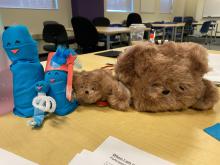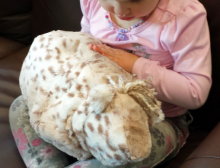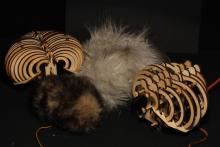Haptic Robot Animacy and Behaviour
Investigating the design process of expressive affective haptic robot behaviors

Investigating the design process of expressive affective haptic robot behaviors

Collection of work on physical human-robot interaction in industrial and manufacturing contexts.
Creating a community for experienced hapticians and newcomers to learn, share, and explore haptic resources and projects, and investigating the challenges involved in haptic experience design for both newcomers and experienced hapticians.

People describe vibrations using emotional descriptions. For example, signals can feel more or less "lively" than others. Can this language be used to stylize vibrations to feel more/less along certain emotional dimensions?

Devices with small screens, such as smartwatches and fitness trackers, struggle with limited forms of input - relying on touch, physical buttons, or voice. Inspired by new materials (such as Gelly, a mutual capacitance based sensor that can sense touch localization, proximity, pressure, and shear developed in the UBC Madden lab), this project explores the potential of in-air gestures performed above the surface to expand both the interaction space and richness of input for such devices.
Voodle is an interface that uses vocal input to design haptic behaviour.
Macaron is a free, open-source, online haptic editor. Designed to be an easy-to-use tool for anyone working with haptics, it is a platform for experimenting with new haptic design features and has helped us understand how examples aid the haptic design process.

The CuddleBot allows us to use an animal model of therapy to examine how touch interactions influence stress and anxiety mitigation.

Embodied, physical interaction can improve learning by making abstractions concrete. We use DIY haptic devices to move hands-on learning online.

Bits are one-degree-of-freedom actuated sketches which we use as a design tool to explore rendering of emotion through physical and visual motion.
